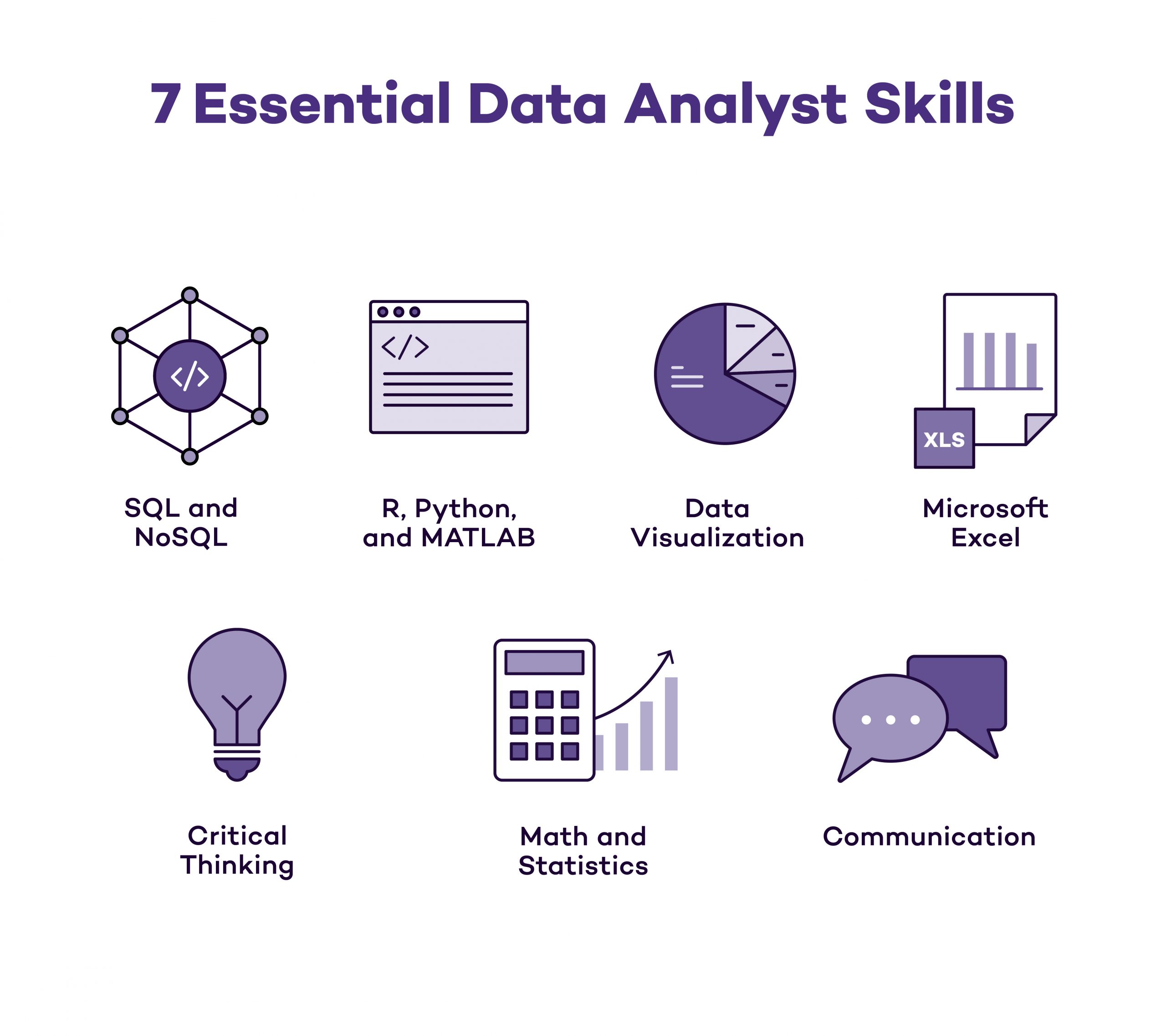1. SQL and NoSQL
SQL (Structured Query Language) and NoSQL (Non-SQL or Not Only SQL) are programming languages that excel at manipulating and querying data. They’re widely used across many functional areas, and data analysts often need to know one or both of these languages depending on their role and the type of data they’re working with.
SQL is used when working with structured databases. Structured data is presented in a standard format and structure — and it generally follows a model. Some examples of structured data include dates, phone numbers, addresses, and names. Structured data is often used in CRM (customer relationship management) systems, ERP (enterprise resource planning) systems, or inventory management systems. SQL Server Data Tools (SSDT) can also be used to build relational databases with the software.
Unstructured data has no predefined data model, making it more difficult to search. Examples of unstructured data include images, sounds, photos, or strings of text; and it can be found in applications like email, text editing software, or media creation software. NoSQL is used to query databases of unstructured data.
Both languages have their place, depending on which kinds of data an analyst is working with. When comparing SQL software with NoSQL, NoSQL is generally considered a stronger tool because of the types of data it can manipulate. While these languages are relatively old, they are not obsolete — knowing how to query and manage data using SQL and NoSQL is critical for any data analyst.
2. R, Python, and MATLAB
Data analysts often have to manage and analyze large, complex data sets beyond what simple spreadsheets or other consumer-focused programs can process. There are many programming languages and statistical modeling languages available, and the best language for a specific analyst depends on the field and the type of data being analyzed. Some of the most common languages in this category include R, Python, and MATLAB.
R is a language developed with statistical computing and data visualization in mind. It provides a large library of statistical and graphical-focused modeling techniques that allow an analyst to find patterns or trends within a data set. MATLAB is a programming platform tuned for software engineers and data scientists, allowing for data analysis and the creation of algorithms. MATLAB is used across various fields, including machine learning, image processing, finance, biology, and academia.
Python is a general-purpose programming language frequently used to analyze data. It’s a widely used language with a vast selection of libraries for various functions. NumPy is one of many popular Python libraries used for analyzing data, though the best library for an individual analyst depends on their field of practice.
Data analysts often use languages like R, Python, and MATLAB to implement algorithms for specialized data analysis. Learning the basics of one (or more) of these languages, and their associated data-focused libraries, can help propel your career as a data analyst.
 Live Chat
Live Chat

